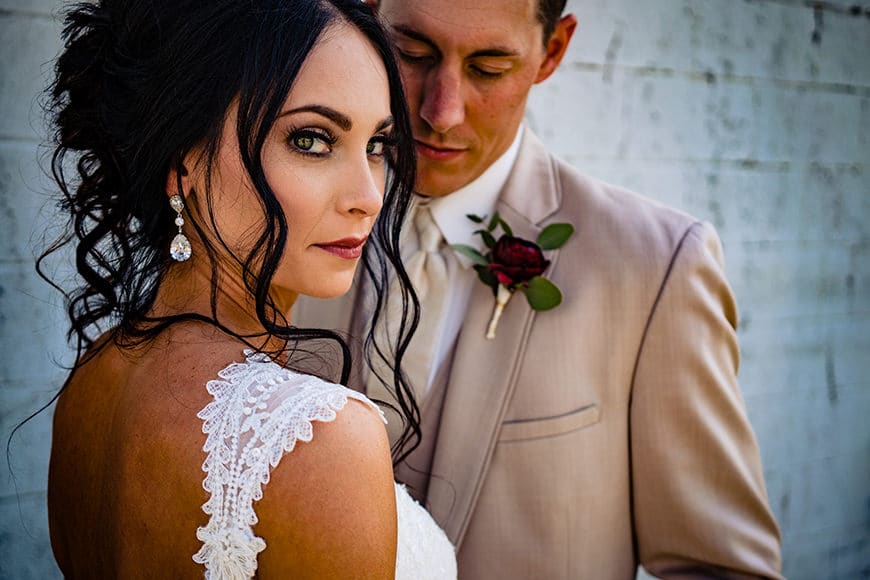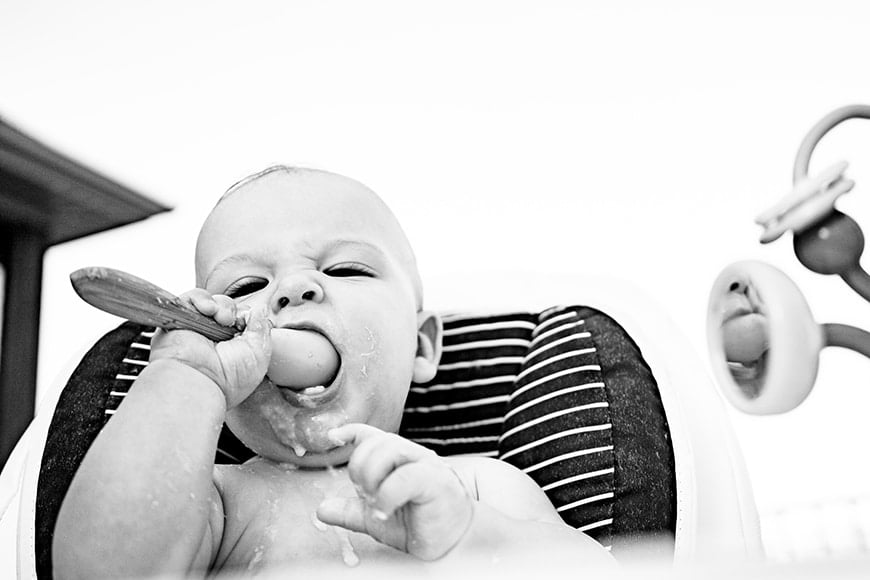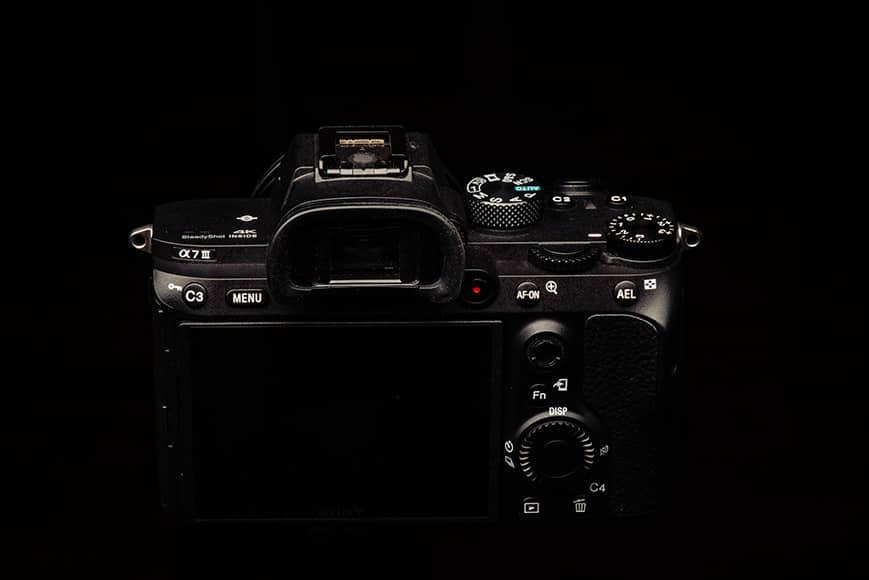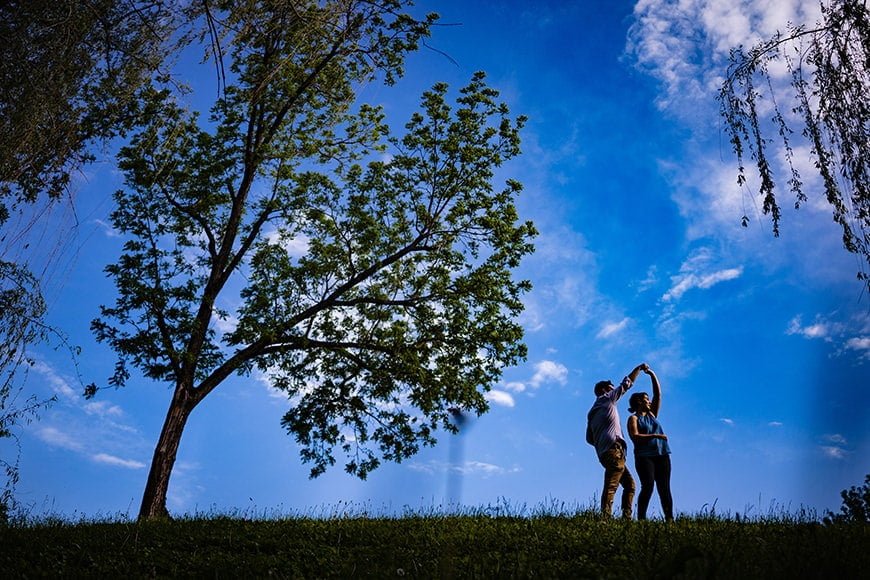
Sony Alpha a7III Camera Review
Impartial Sony a7 III review by wedding photographer Jason Vinson. Read why Jason switched from shooting Fujifilm & Nikon to Sony for the Sony a7 III mirrorless camera.
By Jason Vinson | Last Updated: March 10, 2023
When Sony first released the Sony A7 in 2013 I was instantly intrigued.
Unfortunately, it just wasn’t quite where it needed to be for professional use, especially in the realm of wedding photography.
After the release of the Sony A9 however, things were looking very promising, but with a very steep cost of entry.


Incredible autofocus and high ISO performance. Best value full frame mirrorless camera of the year.
Now that we have the Sony A7 III though, we get some of the best features of the A9 for a fraction of the cost.
But is the A7III where it needs to be for professional use… and is it good enough for me to ditch my Fujifilm system in favour of a Sony camera?!
Sony a7 III Review | The ‘Basic’ Model
- Amazing AF coverage
- Excellent dynamic range
- Impressive high ISO performance
- 5-axis image stabilization
- High level of customization
- Underperforming buffer
- Only one card slot supports UHS-II
When the Sony A7 III was released, they called it the ‘basic’ model. While this may be true when it comes to price, this is far from true when it comes to features.
This new model features a new 24MP sensor that boasts 15 stops of dynamic range and ISO from 100-51,200 (expandable to 50-204,800).
The amazing thing, is that although this sensor is different than the one found on the A9, it has the same AF features – things like 693 phase-detection AF points covering 93% of the frame.

Sony a7 III + Sony 35mm f/2.8 | 1/250 f/2.8 ISO 25600
Coming from a DSLR, you’ll be blown away by this coverage. I was even impressed coming from the Fuji XT-2, which I used to think had amazing AF coverage.
It’s worth mentioning that these 693 AF points are the fast type! You still get 425 contrast detect points that cover the entire frame, perfect to get the most out of the best lenses for the Sony a7III.
Coming from the Fuji XT-2, the AF alone would be worth it for me to switch to the A7 III.
Not only did the camera focus faster, more accurately, and in lower light, but it also has something called Eye AF.
IQ, DR & ISO
The image quality from the Sony A7 III is exactly what you have come to expect from Sony.
For me, 24 MegaPixels is the perfect balance between having data to crop but not so much data that you have a huge giant file.

Sony a7 III + Sony 35mm f/2.8 | 1/1600 f/2.8 ISO100

The dynamic range is amazing. At low ISO I can easily push and pull a file to my heart’s content. This sensor is like most though, where it’s a lot easier to recover shadow details then it is to recover highlight detail.
This is great for me since I tend to shoot the majority of my images underexposed. I like to expose for my highlights since that’s the limiting factor of the dynamic range. From there I can easily push the file to retain those highlights and recover the shadows.
Obviously this is dependent on the ISO level you have dialed in though, so the higher you go in ISO, the more dialed in you need to have your exposure to where you want it in the final image

Sony a7 III + Sony 85mm f/1.8 | 1/4000 f/1.8 ISO100
Speaking of ISO, the high ISO capabilities are amazing. The Sony A7 III actually scored better in low light than its brothers the A7RIII and A7SII over at DxO Mark.
This seemed to be accurate in my testing, although I never really had to boost my ISO as high as I normally would due to the image stabilization.
It’s pretty rare for me to need to capture fast moving subjects in low light. Most of the time is people sitting by candle light, in front of a fire, or even the light from a cell phone.

Sony a7 III + Sony 35mm f/2.8 | 1/4 f/2.8 ISO640
So like in the image above, I can easily rely on the image stabilization to keep the camera shake steady and use a much lower ISO than I ever could before.
Features & Shortcomings
Auto-Focus

Sony a7 III + Sony 35mm f/2.8 | 1/2000 f/2.8 ISO100
If you have never seen Eye AF in action, it’s worth checking out. But after using it in person, I was convinced of its usefulness.
One thing I always struggled with was taking pictures of my son. The unpredictable movements of a kid, especially close up, will give any AF system a run for its money, but the Sony A7 III knocks it out of the park.
No more trying to micro adjust your camera position in an attempt to keep an AF point over an eye as your subject moves.
Now all you have to do is press one button and the camera locks onto the closest eye. The camera will then proceed to track that eye throughout the frame and automatically adjust to the other eye if it becomes the closest eye.
This is a game changing feature, especially with fast-moving and unpredictable subjects.
Memory

Sony a7 III + Sony 35mm f/2.8 | 1/13 f/2.8 ISO640
One other feature new to this round of A7 cameras is the addition of dual memory card slots, which is something that most working professionals place a lot of value on.
Something worth noting is that that the Sony A7 III does support UHS-II fast memory cards, but only for one slot. This means that if you are shooting with the camera set to write each image to both cards, the write speed will be bottle-necked by the slower card.
This essentially makes using the more expensive UHS-II cards pointless if you plan to shoot RAW images to each card. The only option you could have is to shoot RAW to the fast card and a JPEG backup to the slow card.
Since I tend to shoot most of my images underexposed a decent amount so I can push them in post, this isn’t really a viable option for me.
When dealing with the buffer, the Sony A7 III is listed as having a buffer that can hold 76 RAW images. It’s important to note that this is referring to compressed RAW images, which are a 12-bit file instead of 14-bit.
Switch to uncompressed RAW and this drops to less than half the buffer size.
While having a 30 image buffer is definitely manageable, it still means only 3 seconds of shooting when at 10FPS. As you can see in the champagne spray image above, big buffers can mean getting the perfect moment.
Another thing I found strange was just how long it took to format a memory card. Using the exact same card, my Nikon D750 can format in about a second. For some reason the Sony takes almost an entire minute to format the card. Nothing close to being a deal breaker – I just found it strange and partially annoying.
Image Stabilization

Sony a7 III + Sony 35mm f/2.8 | 1/10 f/2.8 ISO1600
One feature that the Sony A7 III has that I found surprisingly useful is the image stabilization. More specifically, 5 axis stabilization.
Using the Sony Carl Zeiss 35mm f/2.8 lens, I’m able to get a sharp image at 1/4th of a second handheld!
This means when shooting slow moving subjects in low light, I can use a much lower ISO to give me a cleaner image.
The image above was shot handheld at 1/10th of a second, and is tack sharp – something that wouldn’t be possible without this level of image stabilization.
I also hear this feature is great for people that shoot video.
Ergonomics

When it comes to the physical camera, I feel like the Sony A7 III has a good button layout and a nice feel in my hand.
I do wish it had the dial on the left side like the Sony A9, but not a deal breaker.
EVF

Sony a7 III + Sony 85mm f/1.8 | 1/320 f/2.8 ISO100
I also heard a lot about the Sony A7 III having a lower end EVF, but unless you are shooting it side by side with an Sony a7R III or Sony A9, you probably won’t even notice – the image in the EVF is plenty sharp and has no problem with its refresh rate.
The Sony A7 III has the same resolution as the Fuji XT-2, which has always been regarded as a great EVF.
The only issue I had was every so often, something would lag and cause the EVF not to turn on when I put my eye up to the viewfinder. It happens so rarely it’s not a huge deal, but happens enough that I noticed it was doing something weird. In the same price range, Canon EOS R has a better viewfinder. You can check Sony a7 iii vs Canon EOS R comparison guide for detailed differences.
Customization

The level of customization that is possible with the Sony A7 III is amazing. There are options that I’d never even thought about before, but now that I have them, it would be hard to go back.
For example, I shoot with back button focus, so my default focus settings are Flexible Spot with AF-C. Now I also have another button set to lock-on Flexible Spot, and yet another button set to Eye AF.
So that leaves me three buttons I can use to engage the AF depending on what the situation calls for, and I never have to change a single camera setting.
Another example of the customization options is the ability to have one button recall a Custom Memory Function.
So say you are shooting in full manual and using flash – you could have a button set so that when you hold it, it will switch the camera to Aperture Priority, engage AF in the setting of your choosing, and set the flash not to fire.
With the Sony A7 III you can quickly and easily jump from one shooting situation to the other without actually changing any settings!
As for shooting flash, the Sony A7 III is in line with most other models. It has a 1/250th sync speed and can shoot with manual, TTL, and HSS.
My flash of choice is the Godox AD200, and if you haven’t seen this flash, do yourself a favor and look into it – it’s amazing!
[Ed – Check out the Godox AD200 review after reading this, and also my recommended accessories for Sony cameras!]
One quirky thing that you must know before using flash with this camera though is that out of the box, the electronic front curtain shutter is set to ‘on’ by default.
Without getting into the boring details, this feature does not play nice with high speed sync – I learned this the hard way.

Weird banding caused by the electronic front curtain and HSS flash
Having it turned on is something you will probably want in most other shooting conditions. So instead of having to remember when to turn it on as well as having to dive into the menu to do so, I put those amazing customizations on the Sony A7 III to good use.
When I am in Memory Function 1 on the main dial, the camera sets itself to my default settings (Aperture Priority, front electronic shutter on, AF-C, Etc.).
When I set the dial to Manual (which I always use when using flash), the camera automatically switches the electronic front curtain shutter to off. Amazing!
Price

Sony a7 III + Sony 35mm f/2.8 | 1/2500 f/2.8 ISO100
Last thing I want to talk about is the price. This camera comes in at just under $2,000.
That’s about the same price as the Fuji XH-1, which is an APS-C crop sensor camera. So for a mere $100 more with the Sony A7 III, you get a full frame camera with some of the best AF, ISO, and dynamic range you can get in a mirrorless camera.
Now, for this price you only get the body, a strap, the battery, and some documents. You don’t even get a battery charger!
Instead, Sony provide a cheaply made cable for charging via the micro USB port. I understand it’s part of getting the price so low, but how much can it really cost them for a battery charger?
Sony a7 III RAW Samples | Editor’s Comment
Editor: since I own the Sony A7 III, I thought I’d include some RAW sample images from my recent wedding photography work with this camera.
Note that all these images have had absolutely no post production applied whatsoever, except for a slight bump in exposure (since I tend to shoot underexposed). I haven’t even added any sharpening for the web – these are JPEG versions of the RAW files, essentially straight out of camera.
This is just to give you an idea of what the Sony A7 III is capable of in different lighting conditions during an average day.
Sony a7III Firmware Update
Perhaps taking the cue from its main competitor in the mirrorless camera market, Sony has thankfully decided to continuously improvement the functionality of their products via free firmware updates.
…and in the case of the Sony a7III, this is a significant one!
For those who don’t know, a firmware update is something that aims to improve your camera ‘from the inside’ – i.e. your camera’s software.
This means that you can keep using the same hardware (i.e. your camera) for many years, safe in the knowledge that the technology inside it is still up to date.
In April 2019, Sony released Firmware Update Version 3.00 for the a7Riii and a7iii cameras. Benefits and Improvements here included:
- Real-time Eye AF for animals
- Enables the possibility to operate the real-time EYE AF by half-pressing the shutter button, or by pressing the AF-ON button in AF-S and AF-C (there is no longer any need to hold down a custom key)
- Addition of the interval shooting function
- Allows the operation with the wireless remote commander RMT-P1BT
- Other improvements:
- [MENU] can be assigned to a custom key
- [MENU] tab operation with the Fn button
- Improves the overall stability of the camera
Evolved Eye-AF brings the A7 series in line with the A6400 and A9 (after its recent version 5.00 update).
Get the Sony a7III firmware update here.
FAQ’S
Should I buy a Sony a7III in 2023?
Yes, Sony a7III is worth considering in 2023 for its remarkable quality-to-price ratio. Its versatility makes it an excellent choice for portrait, event, and landscape photography.
Which SD card works best with Sony a7III?
Sony a7III has two SD card slots. The first one utilizes UHS-I SD cards, while the other one uses UHS-II cards.
Is the Sony a7III good for beginners?
Yes, inexperienced users can benefit from Sony a7III’s beginner-friendly features, such as its in-body image stabilization and crisp picture quality.
Is the Sony a7III weather sealed?
No, the Sony a7III isn’t weather sealed. However, it’s capable of resisting moisture and dust to a certain extent.
Does the Sony a7III have a touchscreen?
Yes, Sony a7III has touchscreen capabilities which means you can set focus points and tweak settings with your fingertips.
Sony a7 III Review | Conclusion

Sony a7 III + Sony 35mm f/2.8 | 1/6400 f/2.8 ISO100
At the end of the day, the Sony A7 III is not the perfect camera… but I don’t think there will ever be an all round perfect camera.
But for me, what I do, and how I like to shoot, the Sony A7 III comes as close to perfect as I have ever seen.
I have always been a huge fan of Fuji cameras and have shot the X-Pro2 and X-T2 since their release. I absolutely love the way Fuji does business and the way they constantly release firmware updates… but after shooting with the Sony A7 III, I can’t go back.
There are things I wish could be fixed or added that will probably never happen, but even knowing that, I’m jumping all in and selling my Fuji and Nikon kit.
The Sony A7 III is a small camera that packs a huge punch for a small price. All other camera manufactures have a lot of work ahead of them if they want to stay competitive.


Incredible autofocus and high ISO performance. Best value full frame mirrorless camera of the year.


























